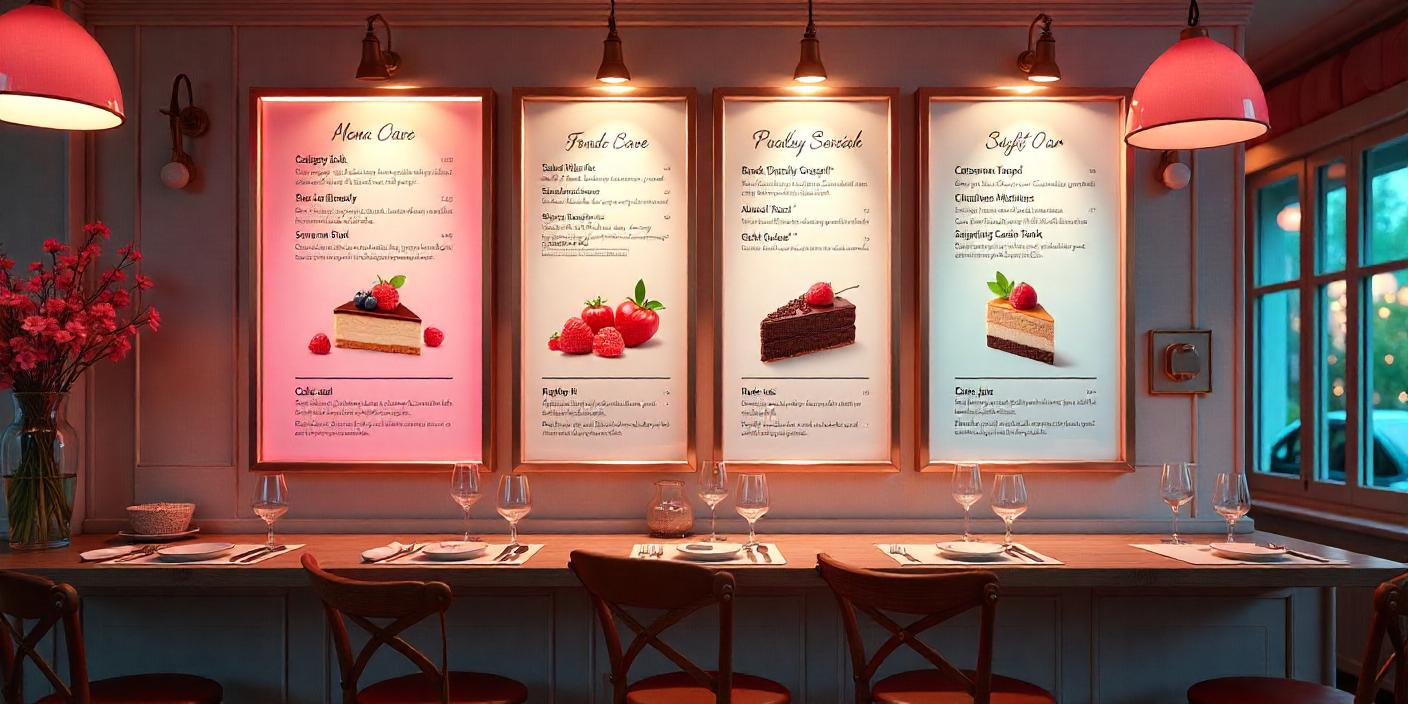
With technology supporting change, the restaurant industry is growing at a fast pace and impacts guests’ experiences. Digital signage for restaurants and digital menu boards are among the most powerful innovations today. Now, moving menus are taking over from old-fashioned ones, help restaurants attract visitors, raise their sales and make their work easier.
Here, we will cover the ways digital signage can help restaurants, different types of digital menus and recommend how to get the most out of them.
The Importance of Digital Signage for Restaurants
Digital signage is not just a new type of menu; it is also a flexible marketing and work tool that can change the experience customers have with restaurants. This is the reason why restaurants are choosing to switch.
1. Indoor Digital Menu Boards
Digital menu boards enable restaurants to make instant changes to menus such as adjusting prices or introducing new dishes for a season. You can quickly let people know about any updates since the menu is changed with just a few clicks on the website.
2. Outdoor Digital Displays
Clear images, attractive animations and pretty videos draw more attention to the food options. It is believed that digital menus assist in selling more food, by 3-8%, by drawing the eye to dishes that earn the highest profits.
3. Better Customer Service
Bright screens with scrolling messages can make waiting customers feel as if the wait is shorter. Self-ordering, options for customization and language choices make visiting these places more convenient.
4. Benefits From Economies of Scale
The initial cost of digital boards is greater, but since they eliminate print expenses and can be changed endlessly, they cost less overtime.
5. Improved Brand Uniformity
With digital signage, a brand can display its artwork, colors and messages in the same way at all its offices. Promotional videos or social media screens can be shown in restaurants to help promote their brand.
Sorts of Digital Signage for Restaurants
Different digital displays can be used in restaurants based on what they require. These are the most popular methods people use:
1. Inside Digital Menu Boards
Showing food items, their prices and promotions to guests who are waiting in line or by walking through the restaurant.
• Benefits People Who Run: Quick-service restaurants (QSRs), cafes and fast-food chains.
• Benefits of a website include quick updating, less frequent errors in orders and a better-looking design.
2. Screen Panels Outside
• First Use: Entice people in front of the business with flashy ads for its daily specials or happy hour.
• Works Best: These make the most sense for bars, casual restaurants and coffee shops.
A sign in a busy area allows more people to see your message.
3. Self-Service Kiosks
• First Use: Customers are able to place their own orders online.
• Works Best: For places like fast-food chains, food courts and restaurants that get busy.
• Positives include less need for workers, fastest service and fewer mistakes in orders.
4. Tabletop Digital Signboards
• Main purpose: For quickly browsing the menu, placing an order or playing games while people wait.
• Suitable For: Diners, family restaurants and large restaurants that provide table service.
• Benefits: Draws interest from customers and encourages them to order desserts and drinks.
5. Signs in the Kitchen & Back-of-House
• Primary Function: Placing orders for the kitchen staff as soon as they are placed.
• Made For: Establishments that receive a lot of orders each day.
• Benefits: It prevents confusion and improves the speed of making meals.
Tips for Placing Digital Menu Boards
Here are the best ways restaurants can use digital signage:
1. Keep Content Clear & Engaging
• Resolution for the images of menu items should be high.
• Stick to clear information and use visuals for emphasis.
• Use simple animations so they catch your audience’s eye without being too noticeable.
2. Optimize Speed & Readability
• Make certain your site loads quickly to avoid making customers unhappy.
• Go with fonts that are easy to read, especially in restricted spaces like a drive thru.
3. Update Content Regularly
• Move promotions from breakfast to dinner and vice versa, according to the time.
Mention LTOs to encourage customers to act quickly.
4. Employ Data & Analytics
• Pay attention to the dishes that get the most sales.
• Modify prices and campaigns in reaction to your customers’ actions.
5. Check the Reliability & Keep the System Maintained
• Choose LED monitors that have anti-glare protection.
• Set aside time to update your software when updates are available.
The Future of Digital Signage in Restaurants
Advances in technology will ensure digital menu boards for restaurants are more interactive and tailored to customers. Examples of emerging trends are:
• AI-Powered Recommendations: Suggestions of meals that match what customers prefer.
• Integration with Mobile Apps: Offering customers the possibility to place orders ahead of time through QR codes.
• AR Menus: Giving customers a 3D view of the food they want to order.
Conclusion
Digital signs and menus are helping restaurants become more productive, boost their revenue and satisfy customers. A digital display helps any restaurant or food chain remain competitive in today’s world of technology.
Using digital signage, restaurants can spend less, simplify taking orders and entertain customers more. Moving toward digital marketing will become a necessity for restaurants; are you prepared to make the change?